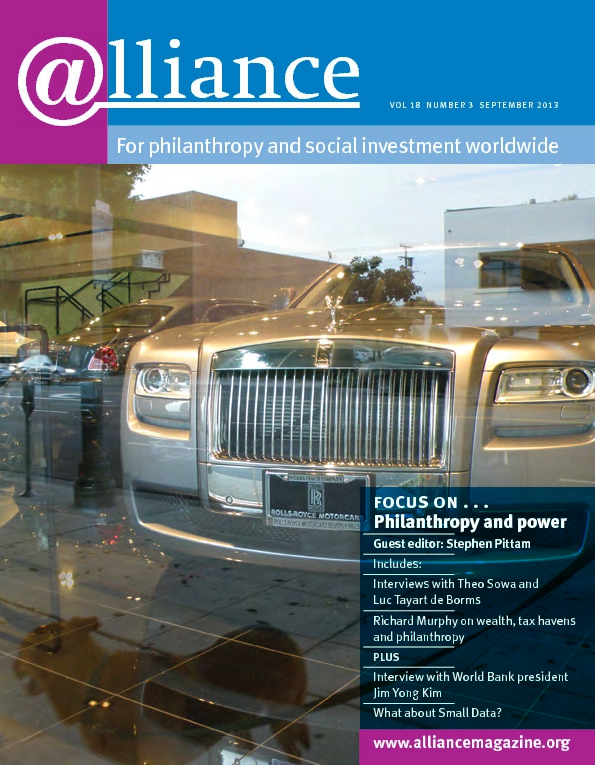An independent study conducted by a French NGO in Sierra Leone at the end of 2010, and funded by Pro Victimis Foundation, surveyed all existing water access points across three districts, documenting in detail the quality of the 2,859 structures identified. The results are disquieting. Only 30 per cent of the structures in place were found to be capable of delivering access to safe water throughout the year and 56 per cent were capable of producing safe water at some point in the year.
The findings of the study were published by Pro Victimis in February this year under the title Existing Water Access Points in the Districts of Bo, Koinadugu and Tonkolili in Sierra Leone. There is apparently a dearth of information of this sort at national or even regional levels. No other survey on such a scale covering both technical and sociological aspects of water access points and mapping them over a period of decades seems to exist.
While the lack of access to water in many villages is not surprising, ‘the extraordinarily low rates of functionality for existing water access structures is quite surprising’, concludes the study. More than a quarter of the structures in place were either missing a pump or had a pump that did not function, the result of a lack of preventive maintenance and technical know-how and of a disorganized and inadequate market for pumps and spare parts in Sierra Leone. With such a wide variety of pumps in use all requiring different spare parts, it is almost impossible to establish cost-effective maintenance chains.
Another problem is that many wells dry up, largely because they were not built at the time of year when the water table is lowest – which is well-known and recognized good practice: ‘the high rates of seasonal drying point either to a poorly managed operational timetable, dictated by supply and “pressure-to-build-quickly” mentality’, says the report, ‘or to a lack of rigour in drawing up precise specification requirements for the construction contractors, a lack of supervision and proper acceptance of the works by the commissioning bodies, and a failure to impose penalties for faulty construction.’
One of the survey’s most surprising findings is that older water access points function much better than newer ones: 73 per cent of the 22-year-old systems surveyed were working, as opposed to 40 per cent of one-year-old systems. This may be due to an emergency approach developed during the civil war, the ‘pressure-to-build-quickly’ mentality referred to above. However, ‘this donor-induced emergency approach seems to have remained even after the conflict ended and stability was restored’, says the study. Whatever the reason, a 40 per cent rate of functioning for one-year-old systems signals a deep, indeed ‘systemic’ problem.
Alliance spoke to Nicholas Borsinger, director of Pro Victimis.
What is going wrong?
 What’s going wrong is a widespread disregard for recognized good practices. And lack of responsibility. NGOs are not checking their contractors. Donors are not checking their partners. Not taking responsibility at different levels is the second part of the answer. And then comes the fact that instead of having a broad view of things, everyone is concentrating on their 10 or 20 or however many wells, with absolute ignorance of what’s going on around them and how things are being done by others. Which leads to over-concentration of infrastructure in some villages and some districts and absence in others. Finally, every funder and NGO is keen to implement their own project. There are too many systems being used, which renders impossible the setting up of an efficient spare parts distribution system. No poor country can have 20 different systems for water pumps, requiring 20 systems for spare parts. (Pictured: a hand-pump well in Sierra Leone being repaired.)
What’s going wrong is a widespread disregard for recognized good practices. And lack of responsibility. NGOs are not checking their contractors. Donors are not checking their partners. Not taking responsibility at different levels is the second part of the answer. And then comes the fact that instead of having a broad view of things, everyone is concentrating on their 10 or 20 or however many wells, with absolute ignorance of what’s going on around them and how things are being done by others. Which leads to over-concentration of infrastructure in some villages and some districts and absence in others. Finally, every funder and NGO is keen to implement their own project. There are too many systems being used, which renders impossible the setting up of an efficient spare parts distribution system. No poor country can have 20 different systems for water pumps, requiring 20 systems for spare parts. (Pictured: a hand-pump well in Sierra Leone being repaired.)
Who is responsible?
The responsibility is spread among all the actors, but at the end of day I feel that donors, be it small foundations or the UK’s Department for International Development or USAID or others, have a big responsibility, because if they had an efficient control mechanism, dysfunctionalities would have been noticed earlier.
The research exposes a blinkered outlook, where no one knows what others are doing. Should initial proposals be a lot broader and should funders insist on this?
Not necessarily at a national level, but at least at a district level, yes, they need to have an overview of the broader context in which they are operating. All right, if you’re a very small donor, you may receive an application for 10 or 20 wells. You should at least ask: ‘What is the picture in the 10 nearest villages or in the district in which the wells are meant to be built?’ That would force applicants to systematically have a broader view. So the answer is yes, but again at the required level. If it’s going to be a huge European Union programme for hundreds of wells, the perspective must be quasi-national; if it’s a small operator, a lesser level is relevant.
What else should donors do on their side?
They shouldn’t just accept execution reports of how many wells were dug or boreholes or pumps installed, but ask systematically – as part of the contract – how the distribution of spare parts will be handled and what reports the donor will receive over time on how well the system is functioning. As long as donors are more interested in quantities of work done than in the functionality of systems installed, there is no incentive for operators to follow up.
That sort of oversight, of course, has a cost. If you’re going to ask somebody to go back – again assuming a relatively small donor for 10 or 20 wells – it means that somebody is going to have to make a survey in two or three years’ time and the donor must be ready to cover the costs of that. Donors to different degrees put a cap on programme costs or on ratios of hardware to software. Some of these restrictions are necessary, but some are very unhealthy.
In fact, it seems like a false economy to fund ten wells on their own taking no notice of what’s going on around them?
Absolutely. And it’s worse than a false economy, as this survey shows, it’s very costly. It contributes to a very large-scale misallocation of resources. And what is true about access to safe water systems of course applies to other issues – foundations need to concentrate on the degree of functionality of work they support on a widespread level. This interview is about water systems, but it isn’t just about water systems; it’s about the failures of all sorts of other things. The lessons are much wider.
What can foundations do to help change this?
I am convinced that a good role for foundations, who are relatively small actors in comparison with big development agencies, could be to provide this type of critical overview rather than funding a few more wells or waterpoints in the field. They could fund surveys to see how well the system is working in other areas, since the Pro Victimis survey exposes a dysfunctional system in a part of Sierra Leone. And they could also help to make a splash – draw attention to the level of dysfunctionality, something which Pro Victimis has not managed to do with this report.
Another possibility is to fund a spare parts distribution system. Spare parts are presently something that very few people are dedicating resources to because it’s not eye-catching, but any effort which makes the system, rather than individual installations, more efficient would in my view be worth foundations focusing on. It’s unpopular but has an enormous leverage effect.
For more information
Or to download the report, go to http://www.provictimis.org
Contact Nicholas Borsinger at contact@provictimis.org






Comments (0)